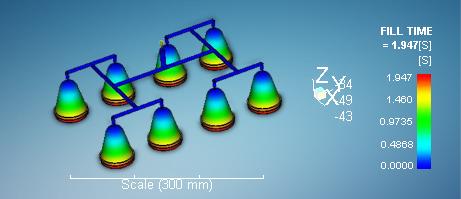Four Molding Techniques Apt For Manufacturing Medical Components

The wonders of molding were identified by many manufacturers of medical and dental devices. The need to integrate the marvels of the molding technology was first felt when the dental and medical items’ contours became more demanding than ever. Also, the sudden increase in the functionalities of medical and dental items required the molding technique to be above the curve. The advances in the technique help the medical items manufactures to bring in innovative designs.
Novel tweaks were made in the conventional molding technology to cater the unique demands of the medical equipment design engineers. Among many refreshing improvements in molding process, four of the techniques stand out. First, pulsed cooling and induction coil heating has helped in achieving a higher degree of process control. However, the other two - gas-assisted and multi-live feed processes – incorporate auxiliary equipment in standard machinery. The final technique – multimaterial – have modified the tooling and molding machinery for the best.
The first technique –
The pulsed cooling and induction coil heating technique helps in easily controlling the temperature of the mold. The technology is designed for addressing the pitfalls in the moldcooling methodology. In the conventional molding technique, the mold’s temperature is regulated with the help of a coolant such as oil/water. For such temperature regulation, the conventional mold comes equipped with a water-inlet.
However, in a pulsed cooling and induction coil heating method, the heating temperature is maintained during injection stroke. In injection stroke, the water flow stops and manifold valves are closed. When the injection stroke stops, the valves are reopened until the steel gets cooled. The technique can promote excellent dimensional stability, high resistance against heat distortion, and the like.
The second technique –
The foremost patent in gas-assisted injection molding took place in late 1970s. It was not until 1980s, that the technique was re-conceptualized; however, during the turn of the century, the technology has experienced immense growth and acceptance from every Mould Manufacturer in India. The specific technique has borrowed its working by modifying the structural foam process, also referred to as gas counter pressure. The technique is beneficial for designing as well as manufacturing the components of gas-assisted medical equipment. Unlike the pulsed cooling and induction coil heating technique, gas-assisted technology does not form any type of cellular structure; rather, the gas and polymer produce discreet, individual layers.
The third technique –
The Multi-live feed technique addresses all the problems faced while manipulating the melted polymer once it has filled the cavity. Between the starting and the final stage of molding, only two external effects take place on the melt. The first act affects the melt when heat removal is done by blending convection and conduction. While, the second point to affect the melt is the pack-and-hold pressures generated by the screws.
The fourth technique –
Dissimilar from the above three techniques discussed, the multimaterial technology does not use any type of auxiliary equipment. A multimaterial molding requires specific equipment. Several methods come under the broad umbrella of multimaterial technique such as sandwich molding, two-shot molding, overmolding and coinjection.
Such and many other cutting-edge molding techniques have helped in meeting the exacting requirements of medical device manufacturers. Also, many mold manufacturers are bringing innovative cap moulds, especially designed for the medical sector.
Post Your Ad Here
Comments